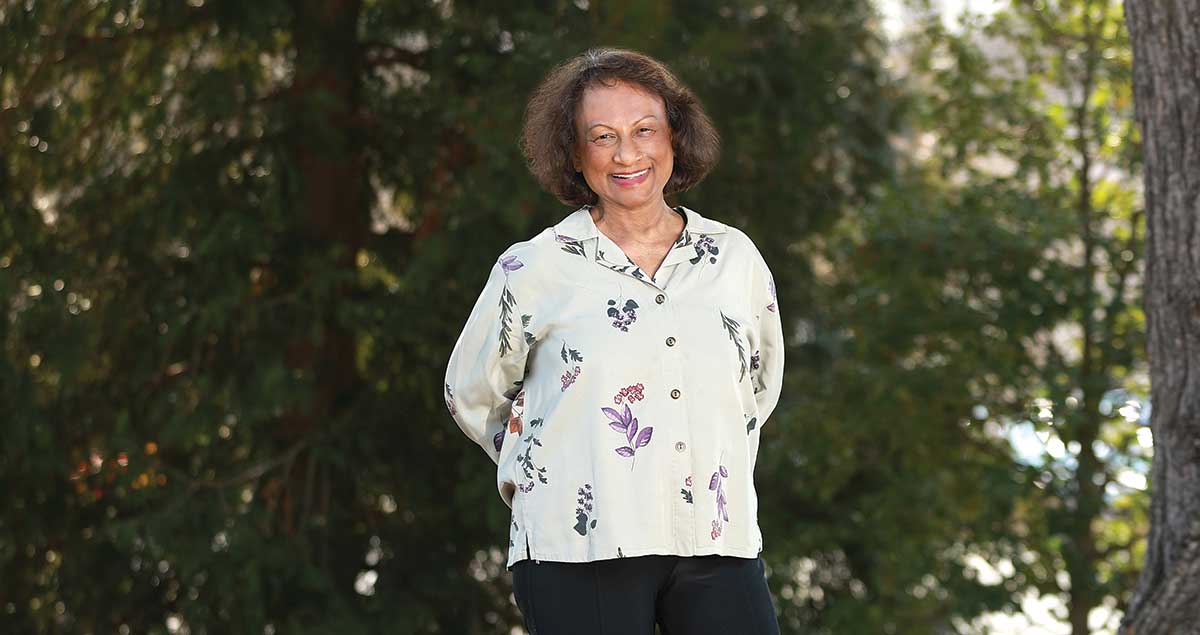Living Pain Free After Precision-Guided Back Surgery
After five years of debilitating back pain, Maybell Williams had had enough. Everything she tried — medications, steroid injections, physical therapy, wearing a brace — had little effect on her pain.
“I was in misery,” Maybell said. “My pain was so extreme it affected almost every aspect of my life. I had trouble doing basic tasks; standing up straight was nearly impossible. I could not pick up or play with my grandchildren.”
 She was hesitant about having surgery, but that’s what Philip Schneider, MD, medical director of Holy Cross Hospital’s Spine Center, said she needed.
She was hesitant about having surgery, but that’s what Philip Schneider, MD, medical director of Holy Cross Hospital’s Spine Center, said she needed.
“When Maybell came to see me, she was at her wits’ end,” Dr. Schneider said. “Pain wears you down, mentally and physically. After trying all kinds of conservative treatments to get better, at some point you say, ‘I know it’s time to do something different.’ That’s what happened to Maybell.”
Dr. Schneider diagnosed Maybell with spinal stenosis, a severe narrowing of the spine that pinches the sciatic nerve, causing sharp, stabbing pain. The sciatic nerve is the largest in the body, running from the lower back and down each leg. She also had spondylolisthesis, or misaligned bones. Due to weakness in her back, the bones had become unstable, exacerbating her pain.
Last July, Dr. Schneider performed a lumbar laminectomy, a type of decompression surgery that relieves pressure on the spinal cord and nerves by removing bone spurs and calcium deposits to enlarge the spinal canal. Maybell also required a spinal fusion to realign several bones in her spine that had slipped out of place. The fusion joins vertebrae together by adding bone grafting tissue with titanium screws and rods, enabling the back to become strong and stable.
For these two minimally invasive spine procedures, Dr. Schneider had state-of-the-art technological support: the O-arm™ Surgical Imaging System, an intraoperative 2D and 3D imaging system, and StealthStation™ surgical navigation, which tracks the location of surgical instruments throughout a procedure. “This allows us to operate with pinpoint accuracy through smaller incisions, resulting in less pain and a faster recovery for the patient,” Dr. Schneider said.
The spine teams at Holy Cross Hospital and Holy Cross Germantown Hospital are dedicated to ensuring that you have the best possible results utilizing evidence-based practices to minimize pain and increase ability to function. We offer supportive services to help prepare you for your spine procedure, expedite recovery and get you back to normal faster. Our personalized treatment includes patient education, physical therapy, and health and wellness programs.
“From the time I met Dr. Schneider, I knew I was in good hands,” Maybell said. “Everyone I encountered throughout my two-day stay at Holy Cross Hospital went above and beyond to make me feel comfortable.”
“I was able to walk, pain-free, the same day of the procedure. Afterwards, I had two weeks of physical therapy at home followed by several weeks of daily outpatient physical therapy sessions, which made me stronger. To this day, I have not had any pain — that is a miracle,” she said.

